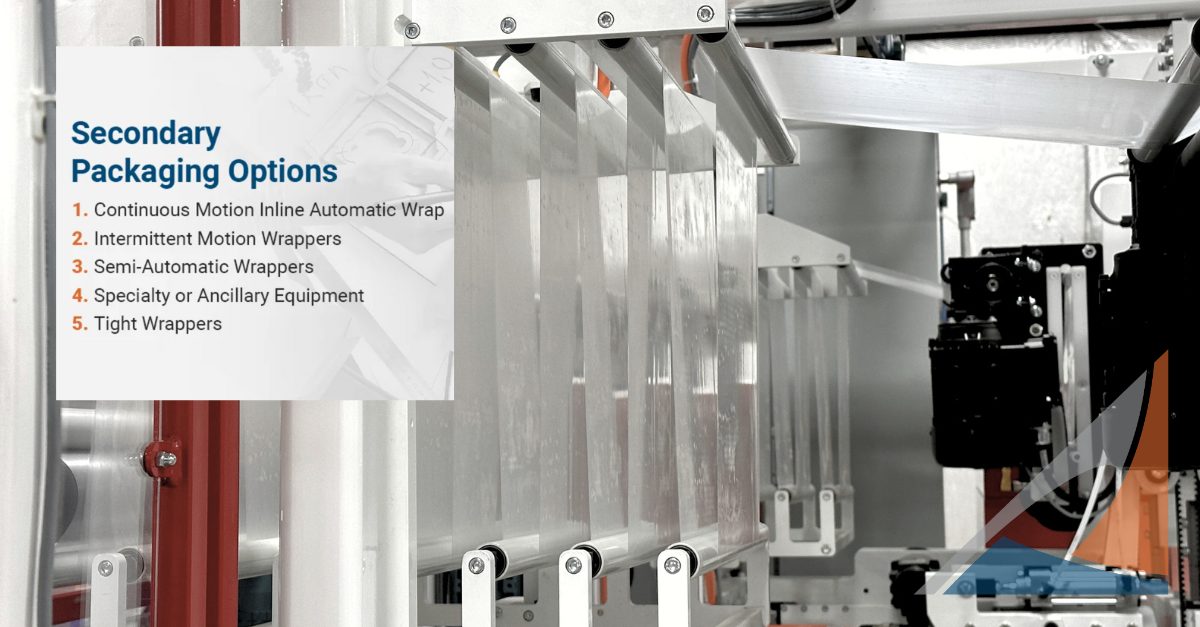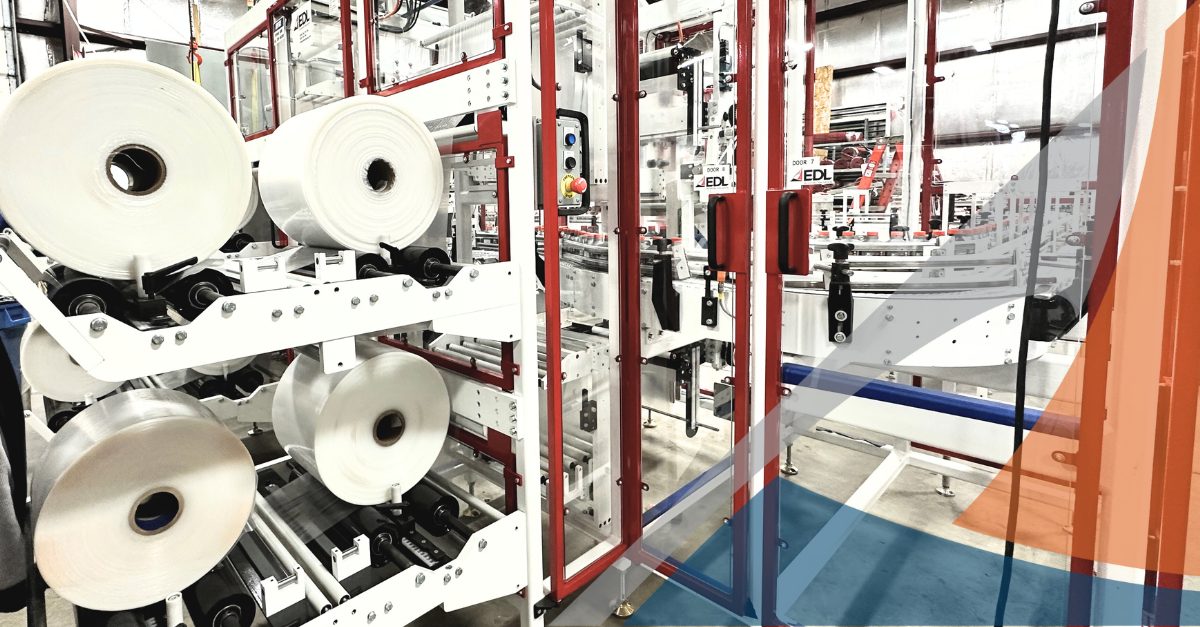02 April 2023 //
Your business’s packaging influences how your customers perceive our brand and products, so choosing the proper packaging from the start is essential. There are multiple layers of packaging — primary, secondary, and tertiary. Below, you’ll learn the importance of each layer of packaging, options, and the importance of product packaging for your products.
What Is Primary Packaging?
Primary product packaging is the packaging that directly interacts with your product. Think of the can that holds your favorite soda, the bottle that contains your shampoo, or the box that holds mac and cheese. Primary packaging is the first layer of packaging containing the product and is also the last touchpoint between your product and the end user of the product. Primary packaging serves multiple purposes, it contains your product, protects the product, communicates critical product information, and is a blank canvas for branding and marketing materials.
What Is Secondary Packaging?
Secondary product packaging refers to the next layer of packaging. Secondary packaging is almost always one of two forms, flexible packaging (i.e. shrink wrap), or rigid packaging (i.e. case packing). Secondary packaging is used primarily during the distribution of a product – from your production line, through warehousing, transfers, shipping, and is typically removed at the store when the product is being stocked on the shelf. Commonly the end user of a product never sees the secondary layer of packaging.
The choice between flexible and rigid secondary packaging is driven by multiple factors and varies product by product. These factors may include, product size, weight, material, handling characteristics, regulations, distribution method, primary packaging material/strength, and other factors. Shrink packaging is typically much less expensive than rigid packaging, as the film is much lower in cost than corrugate, and one roll of film can replace pallets of comparable corrugate. However, some products require corrugate, for the added protection and stability that film cannot provide. Fortunately, shrink wrap (LDPE film) and corrugate materials are both recyclable.
Secondary packaging provides a couple of key services, it provides a package size, product count, and format that is easy to handle either manually, robotically or in a palletizer. Instead of having 12 loose bottles of shampoo, you have an easy-to-handle 3×4 collation shrink-wrapped together or in a rigid case. Secondary packaging provides a layer of protection to keep the primary packaging clean and pristine. Secondary packaging also provides an exterior surface for labeling/printing that contains your product’s information and distribution information.
What Is Tertiary Packaging?
Tertiary Packaging is the final layer. This typically involves a large corrugate master shipper filled with multiple secondary packages or a pallet of secondary packages that is stretch wrapped and ready for the forklift. Tertiary packaging is the final packaging or unit that is used during distribution. It is typically the final step on your packaging equipment line and is the first layer broken apart as a distribution center to the seller/store. Tertiary packaging is simply the bulk package used to transfer a large number of your products from A to B.
Secondary Packaging Options
EDL Packaging specializes in secondary packaging using shrink film. We analyze your products and distribution requirements find the best package format and equipment solution to fit your specific needs. EDL provides multiple options when choosing secondary packaging, allowing you to find a method that works best with your product. Below, you’ll find secondary packaging machinery options to help you choose the proper methods for your brand and product.
1. Continuous Motion Inline Automatic Wrap
EDL’s Continuous Motion Inline Automatic Wrapper is the evolution of the single roll wrapper that’s ideal for wrapping various products, including containers, food and drink products, and trays.
These machines work efficiently, using a continuous-motion seal jaw that moves with the product to seal products quickly and increase line speeds. The Continuous Automatic Wrapper can wrap up to 35 packages per minute, helping to streamline your packaging processes.
Some applications for this machine include:
- Bottles and cans
- Flat-top bagged products
- Trayed products, such as food or spices
- Collections of containers
2. Intermittent Motion Wrappers
There are a few different intermittent motion wrappers you can choose from:
- Side Feed Automatic
- Roll Wrapper
- Inline Automatic Shrink Wrap Machine
- Forming Shoe Wrapper
- Flight Bar Automatic
These machines can help shrink-wrap products in your production line, helping protect them as they’re transported to consumers. Each device can wrap different products, opening the door to numerous possibilities.
Some of the applications of these machines include:
- Textiles
- Carpeting
- Foam padding
- Rolled building materials
- Cartons
- Large windows
- Small multi-packs
- Lightweight products
- Absorbent pads
- Bottles and cans
3. Semi-Automatic Wrappers
Semi-automatic wrappers are ideal when you need high-quality packaging and want to automate most of the process. This machine is cost-efficient for secondary or end-of-line packaging.
The semi-automatic wrapper requires manual loading at the beginning of each wrapping sequence but can complete the rest of the process. You can also incorporate this machine into existing systems.
Some of the applications for this machine include:
- Trayed products, such as food or drinks
- Trayless products, such as cans or cases
- Padded products
- Cartons or small cases
- Products in tubs or bottles
4. Specialty or Ancillary Equipment
There are two types of specialty or ancillary equipment you can use for your secondary or end-of-the-line packaging:
- Shrink Tunnel
- Integrated Ancillary Equipment
These machines are reliable and can be tailored to your product or package. The shrink tunnel boasts ceramic fiber insulation, film cooling fans, a hot air recirculation blower and a high-temperature conveyor belt. Integrated ancillary equipment can incorporate into your existing system to help you find more effective packaging solutions.
Several applications for both of these pieces of machinery include:
- Absorbent pads
- Gable-topped bags, such as pet food and plastic bags
- Flat-top bags for bundling
- Bottles or cans
- Cartons of small product cases
- Unsupported products and coolers
- Doors or fence panels
- Foam products, such as lunch or meat trays and plates
- Supported food trays
- Unsupported food trays
- Large boxed products
- Molded pulp products
- Rolled products, such as carpets or textiles
- Bottles or tubs
The numerous applications of these machines can help various industries meet their packaging needs.
5. Tight Wrappers
You can use two types of tight wrappers — single and double.
Single tight wrappers create a tight, more appealing package and can be an ideal alternative to PVC shrink shelves, strapping or gluing. Double-tight wrappers offer superior product visibility, stability, unitization and protection, helping protect your product as it travels to the consumer.
A few examples of the applications of these machines include:
- Food consumables, both supported and unsupported
- Pet food
- Absorbent pads
- Gabble-topped bags
- Flat-topped bags
- Large box products
- Molded pulp products
How to Choose the Right Packaging Option
The three layers of packaging provides your products with containment, marketing, protection and distribution services. Each layer of packaging is critical to the success of your product.
Depending on your business model, you may benefit more from specific components than others. You’ll want to consider the following factors to help you make your packaging decisions:
- Product size: You can be economical with your designs if you have products of different sizes, allowing you to transport various products in one container. Size and dimensions also factor in what kind of packaging materials you can use. Some products may have awkward edges that don’t fit well in boxes, making them vulnerable to damage if they slide around during transport, so you’ll need to consider your product to choose the best packaging material.
- Branding designs: You’ll want to keep your consumers in mind when choosing your packaging materials. The materials you choose will become a part of your brand, so you don’t want to create a disconnect between your brand message and the materials. You can create the ideal brand design and choose the best option by researching your market, helping you appeal to your customers.
- Budget: One of the most important factors to consider is the depth of your budget. Your budget will be critical in deciding which packaging materials you use and how much you can allocate to your brand design. You’ll need to find a balance between what you want and what you can spend on materials to help you find success with your packaging products.
- Transportation: Consider the function of your chosen packaging. If the packaging material you’ve chosen can’t be transported from your facility to the consumer without taking damage, it’s worth it to consider a better, more durable option. Delicate products should use materials designed for strength, while more resilient products would likely be fine in something less stable.
- Sustainability: Many consumers appreciate when companies consider environmental concerns and buy products associated with sustainability. Using sustainable or recyclable packaging materials can help improve your brand image and make consumers more likely to purchase your products.
Contact EDL for Your Packaging Solution
If you want to implement shrink packaging into your business, EDL is here to help. We offer shrink packaging solutions to help you achieve your secondary or end-of-the-line packaging needs.
Our machinery can work as part of an existing system, and you can choose from automatic or semi-automatic systems to accommodate your operations. Using our machines, your products will be durable, rugged and affordable.
Our equipment and final packaging are tailored to your product and packaging requirements. Contact us today to learn more about how we can revolutionize your secondary packaging operations!


